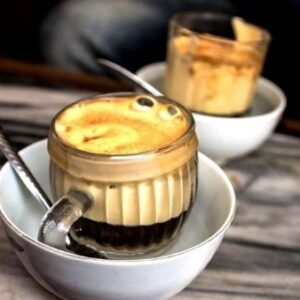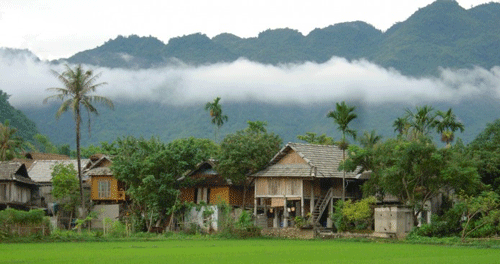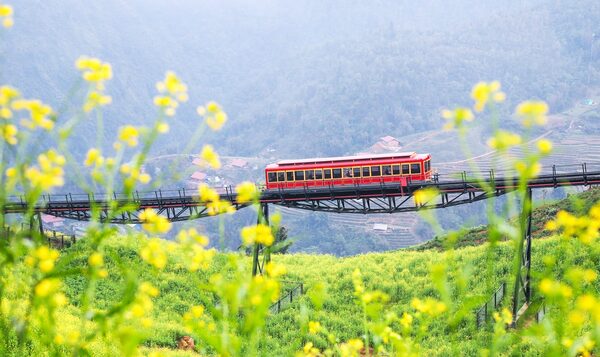Discover Vietnam is not only about discovering the landscape but also about discovering culture. One of the outstanding Vietnamese cultures that can be mentioned is the way Vietnamese people enjoy coffee. Vietnamese coffee has long made a strong impression on foreign visitors. Coffee here stands out not only for the quality and flavor of the beans but also for the innovative combinations and preparations that are truly unique. Let’s explore 6 distinctive ways to enjoy Vietnamese coffee according to the Michelin Guide’s top culinary recommendations.
6 Unique coffee experiences suggested by Michelin
Iced milk coffee – Brown coffee
Iced milk coffee (brown ice coffee) has become an icon in Vietnam’s coffee culture. The preparation of this drink is quite special, from using a Vietnamese drip filter to brew the coffee to combining it with condensed milk and ice, creating a harmonious blend of the bitter flavor of coffee and the sweetness of milk that captivates coffee lovers.
Originating from the bustling streets of Ho Chi Minh City, iced milk coffee has become an essential beverage on the menus of roadside stalls to high-end restaurants. Moreover, it is also served in Vietnamese restaurants worldwide. Most foreign tourists, when tasting Vietnamese iced milk coffee, are deeply impressed and amazed by its preparation.
It can be said that iced milk coffee is not only a common drink for Vietnamese coffee lovers but also a culinary heritage of the country.
Bac xiu
Invented by the Chinese community in Ho Chi Minh City in the early 20th century, bac xiu serves as a symbol of the diverse cultural and unique culinary traditions of the city, combining influences from Chinese, Vietnamese, and French cultures.
For many, the strong flavor of black coffee and coffee with milk can be a challenge for women and children, so the Chinese came up with a more creative option – bac xiu. By adjusting the ratio of coffee and milk (increasing milk and reducing coffee) in the traditional iced milk coffee recipe, bac xiu achieves a perfect balance between the sweetness of milk and the coffee flavor.
Today, you can also find some variations of bac xiu where baristas add fresh milk and creamy whipped cream to enhance the richness of the drink. These versions are also quickly favored by those who want to enjoy coffee but are not accustomed to the bitterness of original coffee.
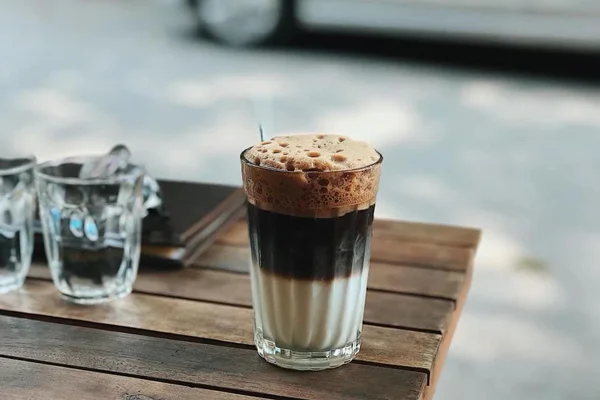
Nowadays, bac xiu is added with fresh milk and heavy cream to increase its creaminess
Egg coffee
Egg coffee is also one of the ways to enjoy Vietnamese coffee that Michelin recommends. Egg coffee can be considered a unique creation born during the difficult times of war. In the 1940s, when the prices of sugar and milk soared, Mr. Nguyen Van Giang, the founder of Café Giang in Hanoi, drew inspiration from his experience working at the Metropole Hotel (Sofitel Legend Metropole Hanoi) to create egg coffee, combining it with the flavor of cappuccino.
By using egg yolks instead of milk, he created a thick, golden layer of cream on top of the coffee, blending the bitter flavor of coffee with the richness of eggs. He then added honey to the finished product to make the drink sweeter. Egg coffee is usually kept warm by soaking it in a bowl of hot water to ensure that the coffee does not become stale due to the eggs.
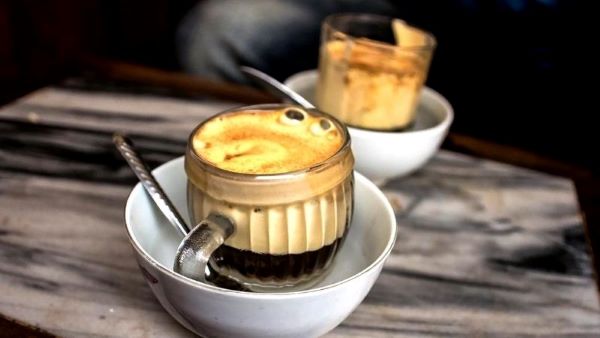
To avoid the fishy taste of eggs, people soak their coffee cup in a bowl of hot water
Served in small cups, Vietnamese egg coffee offers an unmatched experience. With this unique combination, egg coffee has become a specialty that any visitor to Vietnam wants to experience.
Salt coffee
Salt coffee, as the name suggests, is a type of coffee with a salty flavor from salt. This drink reflects the creativity in Vietnamese cuisine in recent years, combining the long-standing tradition of coffee with the innovative spirit of the new century. Originating from Hue, salt coffee combines robusta coffee beans with condensed milk and salt. The salty flavor combined with the bitterness and sweetness creates an impressive taste experience.
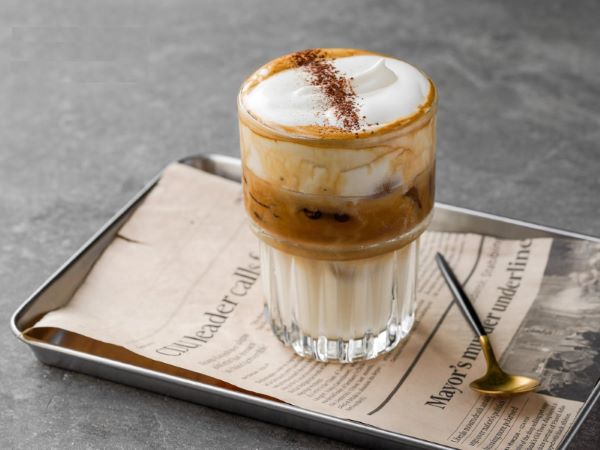
Vietnamese salt coffee, a novel combination highly appreciated by Michelin
Salt coffee is layered, with condensed milk at the bottom, coffee in the middle, and a layer of cream on top. This is a unique culinary adventure. When all the components are stirred together, the saltiness highlights the rich flavor of the coffee, while also soothing the bitterness and enhancing the sweetness and creaminess of the milk.
Coconut coffee
With its delicate formula, the aroma and bitterness of pure coffee combined with the sweetness and creaminess of coconut milk and condensed milk create a symphony of flavors that captivates the senses.
To brew a cup of coconut coffee requires a meticulous process. First, coconut milk is combined with condensed milk and ice cubes, stirred until smooth. Then, black coffee is vigorously shaken in a bottle until a light brown foam forms on the surface. Finally, the coffee is poured into a glass cup, and the thickened coconut milk mixture is slowly poured in, creating a drink with a unique and enticing flavor profile.
Foreign tourists are impressed by this beverage. As soon as it appeared in some foreign restaurants, it caused a sensation there.
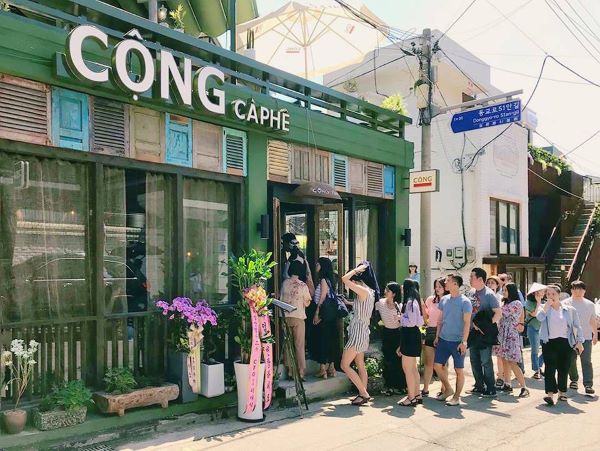
Foreigners line up to try coconut coffee in their home country
Fruit cold brew coffee
Although it has only appeared for a decade now, fruit cold brew coffee is still on list of ways to enjoy Vietnamese coffee by Michelin. Fruit cold brew coffee has brought a breath of fresh air to the coffee culture in Vietnam, quickly winning the affection of people in bustling cities like Hanoi and Ho Chi Minh City.
This drink does not use the traditional Vietnamese coffee brewing method with hot water and a filter but instead uses a cold brewing method, allowing Arabica coffee beans to retain their inherent bitterness. Accompanied by this flavor, Vietnamese people combine it with fruits or fruit juice such as oranges, lychees, and peaches to enhance the refreshing nature of the beverage.
As a tropical country with a variety of fruits, many types of fruit cold brew coffee have been born. However, whether it’s the rich flavor of oranges, the unique sweetness of lychees, or the tartness of peaches, each version offers a unique flavor experience, bringing refreshment and vitality to the drinkers, dispelling the heat of the Vietnamese weather.

Vietnamese fruit cold brew coffee is also recommended by Michelin
Introduced by the French in the mid-19th century, coffee in Vietnam has evolved into a culinary heritage of Vietnam. If you are planning a vacation in Vietnam or are on a travel to Vietnam, we hope you take the time to enjoy the uniqueness of Vietnamese coffee.
With 6 recommendations for exceptional Vietnamese coffee cups by Michelin, encompassing both traditional and contemporary styles, we aim for travelers to find the perfect brew to match their preferences.
Read more:

